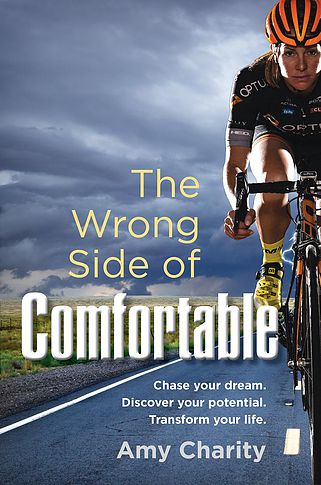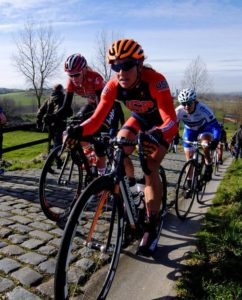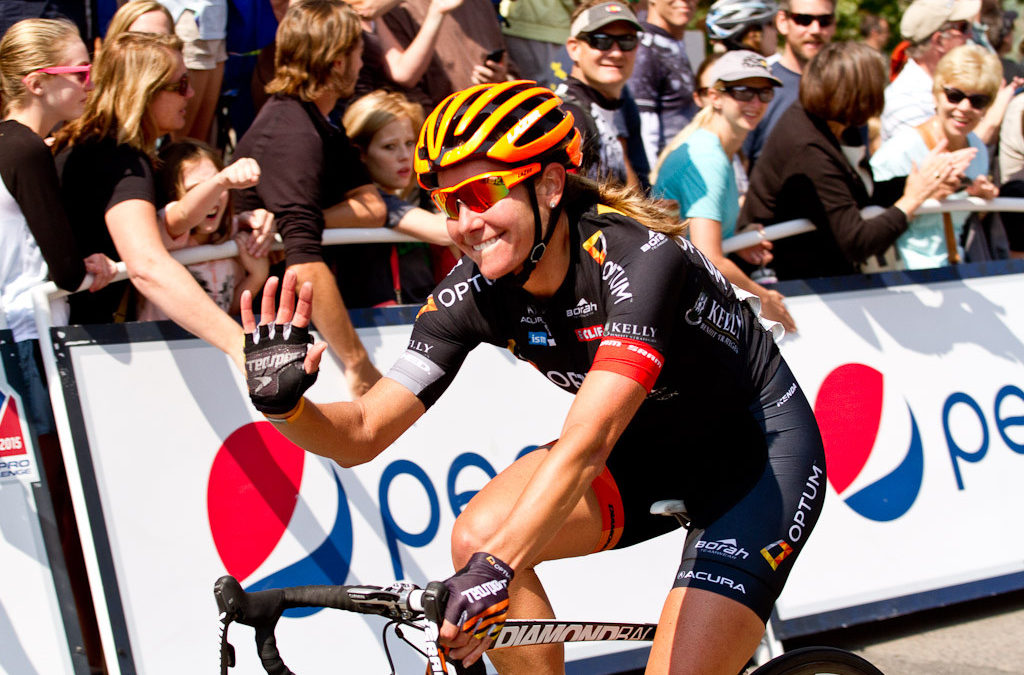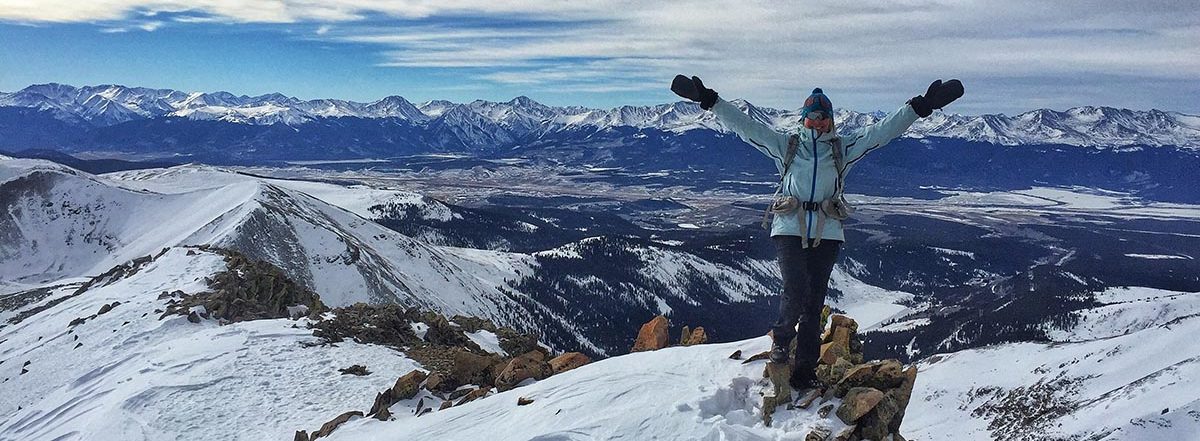 I first met Amy Charity in the early 2000’s when we both worked in the financial services industry and were both triathletes. She was always strong on the bike.
I first met Amy Charity in the early 2000’s when we both worked in the financial services industry and were both triathletes. She was always strong on the bike.
We fell out of touch, and it wasn’t until recently that I learned she had published a book titled: The Wrong Side of Comfortable. It’s her story about becoming a professional cyclist at age 34 (the average age of a female pro cyclist in the peloton is 25), racing for two professional cycling teams and winning a USA National Championship title in the Team Time Trial. Wow!!!
After reading her book (which I highly recommend), I reached out to her to find out more. Here’s my interview with Amy:
You recently wrote a book titled The Wrong Side of Comfortable. Why that title?
The first time I heard the phrase was on a training ride with my husband. He told me to stay on his wheel as he kept ramping up the pace. As my legs and lungs began to burn, I asked him to slow down the pace. His reply was “You’re just on the wrong side of comfortable.” At the time, I wanted to scream that I was in agony! With some reflection, I realized that comfortable was within reach and I was just on the other side, on the edge. To reach my potential as a cyclist, I needed to spend time outside of my comfort zone (i.e. it wasn’t going to be easy, and there would be some suffering involved). Now, I use this concept and phrase on a regular basis to continue to challenge myself.
What inspired you to come a professional cyclist at age 34, an age most professionals would consider old?
I was certainly late to the game with bike racing (the average age of a professional female cyclist is 25). After competing in my first bike race I was hooked. Bike racing combined physical effort, focus, tactics and skill. The more I raced, the more I considered the possibilities of how far I could take bike racing (what if I could win a state road race, or nationals or race in the world championships?). The vision of ‘making it’ as a pro compelled me to keep moving forward. I never wanted to have regrets, so I continued to take steps that eventually led me to a career in bike racing.
You started as a triathlete before making the transition to cyclist. How is triathlon cycling different than pure cycling?
I found bike racing dramatically different from triathlon. In bike racing there are periods of intensity where one is overextended anaerobically. Bike racing is a field of play with extreme variance in speed from intense efforts followed by periods where you’re desperately trying to recover. It’s a strategic wearing down process in which you are never in control of your effort – it is handed to you. In triathlon, you control your effort to keep yourself at the limit of what you can sustain for the entire duration of the event.
Teamwork also plays a critical role in bike racing. There were many races when my job was to protect our GC [General Classification] rider (e.g. bring her bottles, cover attacks, block the wind for her), lead her out for the sprint and then crawl to the finish line for the final 400 meters because I had literally used every ounce of energy. Bike racing isn’t about a personal goal for time. In fact, many racers get pulled from a race if they are ‘not in contention,’ i.e. if it is assumed that the racer will not play a role in the dynamics of the outcome, there is no reason for them to continue the race. This is very different from the overall goal of triathlon.
It took me over a year of bike racing before I realized that it’s not the one who clocks the most kilojoules who wins, but rather the one who conserves energy by sitting well in the peloton and exerting herself when the time is right. Triathlon requires endurance to sustain a consistent effort. Both involve suffering and fitness, but the on/off style of bike racing was a big transition for me.

What is your greatest strength?
Suffering! The longer/more selective a race, the better I tend to do. The intense nature of the Team Time Trial suited my strengths. You’re never off of the pedals in that race, you do everything you can to hold the wheel in front of you and then get back on the wheel of the last teammate after taking a turn on the front.
What is your favorite memory in your professional cycling career?
Tough to pick just one memory for my favorite race (Tour of CA and Pro Challenge in CO are on the short list), but I would say that racing for the US National Team in the Czech Republic was a race where everything clicked. We had an incredible team dynamic with a very experienced and effective director leading our team of 6 talented cyclists. He knew how to bring out the best in each of us. We controlled the race with the tactics that we discussed the night before. We won the overall stage race (Tour de Feminin in Czech Republic) and several stages. It felt amazing to play a role in that win, representing USA Cycling.
Least favorite memory?
My least favorite race was BC Superweek in British Columbia. I broke my elbow 8 days before flying out to the race. I was struggling on the final day in the road race and had just bridged to the front group. I was hanging onto the back of the group trying to recover and the girl in front of me wanted to make a point (that I need to pull through) and she slammed on her brakes. I crashed…on my broken elbow and rebroke my elbow.
There’s a chapter in your book titled: “Grinta (= Grit in Italian).” Tell me about grit.
I’ve been fascinated by what make ones ‘gritty’ since I began bike racing. I love Angela Duckworth’s equation that effort counts twice (Talent x effort = skill. Skill x effort = achievement). To me this means put in the work, that’s the most important aspect of accomplishing what you’re striving for. Essentially grit is not giving up on any level, whether in the middle of a bike race when your legs are screaming or when you run into setbacks getting selected for a team. Grit is perseverance over time.
 What are your favorite and least favorite workouts?
What are your favorite and least favorite workouts?
The workout that kept me up at night (with dread!) was the following: warmup, 8 x (1 minute on (anaerobic capacity/Zone 6), 1 min off). It was so simple and so short, but so incredibly hard.
During racing season, my favorite workout is preparing for the team time trial. We would do a ‘chain gang’ ride, which is a small group of equally matched cyclists doing a continuous paceline rotation at a very high speed. You’re just about at your max in the middle of the paceline, above your max on the front and getting back onto the last cyclist’s wheel. The rotation continues for about an hour on a circuit. The training requires intense concentration to be at one’s physical limit and millimeters behind the next wheel. It’s exhilarating! The hour flies by and I was always shocked at the distance we would cover in that amount of time.
Nowadays, my favorite workout is a 5-6 hour endurance/adventure ride, preferably on quiet, dirt roads – a workout that was never on my training schedule as a bike racer!
Any regrets?
There is a part of me that wishes I began bike racing a decade or so before I did. Some aspects of bike racing take years to learn (e.g. reading a race, following the correct moves, positioning in a 150+ rider peloton), and I was just getting the hang of it when I retired. That said, there were advantages to coming into cycling after having a long career outside of bike racing, such as emotional maturity, endurance, a self preservation mechanism (in bunch sprints), and understanding and working within different team dynamics.
Knowing what you know now as a professional cyclist, how do you train differently on the bike for a triathlon?
I incorporate more interval training on the bike now even when training for triathlon. In bike racing you have to be sharp for the speed of the races and high intensity efforts for attacking, bridging or chasing. I’ve grown to appreciate how tempo, sweet spot and even VO2 Max training allow you to tap into those intensities and stay there longer. I also take rest very seriously! I’ve learned what it means to come into form, and that can only be accomplished through periods of hard training followed by rest.
I also have a better appreciation for how much time can be gained/lost on corners and descents, so cycling skills are critical not only for road racers, but for triathletes as well.
Any advice for aspiring cyclists?
Understand your strengths and come back to those strengths when you’re doubting yourself. Are you a great technical rider? A climber, a sprinter, great at short events or long events? Focus some time on improving your weaknesses, but understand what you do well and remind yourself of that strength in your training and racing.
What’s next for you? Any other big bucket list items?
I’m competing in a 200 mile gravel race on June 2 called the Dirty Kanza. It’s become a popular race among retired pro roadies and mountain bikers.
Where can we find out more about you and what you’re doing?
Be sure to check out my website and blog: amymcharity.com.
—
Thanks, Amy! You inspire. Good luck in all your future endeavors!
David
—
 As an athlete, David Glover has completed 28 IRONMAN distance triathlons, which includes two sub 9 hour finishes and winning the Vineman Full Triathlon twice. Now, David’s passion now is helping triathlete and other endurance athletes achieve their dreams through his online triathlon education and training company, ENDURANCEWORKS. David has an MS in Exercise Physiology and is certified as a coach by IRONMAN Triathlon, USA Triathlon and USA Cycling plus has his CSCS from NSCA. After six years of living, training and coaching in the triathlon mecca of Boulder, CO, David currently resides in Southern California.
As an athlete, David Glover has completed 28 IRONMAN distance triathlons, which includes two sub 9 hour finishes and winning the Vineman Full Triathlon twice. Now, David’s passion now is helping triathlete and other endurance athletes achieve their dreams through his online triathlon education and training company, ENDURANCEWORKS. David has an MS in Exercise Physiology and is certified as a coach by IRONMAN Triathlon, USA Triathlon and USA Cycling plus has his CSCS from NSCA. After six years of living, training and coaching in the triathlon mecca of Boulder, CO, David currently resides in Southern California.


